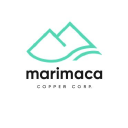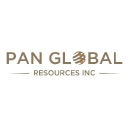Top Copper Districts Prepare for Demand Headwinds as Green Energy Transition Progresses

Copper faces trade and macro headwinds in 2025 but stands to benefit from electrification and tight mine supply long-term.
- US tariffs on copper imports from China are expected to widen the price gap between the US CME and London LME copper contracts, potentially pushing CME prices 10-25% higher. However, tariffs could also hurt global copper demand.
- Trump's policies including tariffs, a stronger dollar, and de-emphasis of environmental goals are expected to be headwinds for copper demand. China's stimulus measures have so far failed to significantly boost copper consumption amid economic slowdown and property sector woes.
- The refined copper market is projected to remain in a small surplus in 2025 as production growth is capped by tight concentrate supply. Treatment charges paid by miners to smelters have plunged to record lows. Mine supply growth will pick up in 2025 but geopolitical risks remain.
- The copper scrap market is poised for faster growth than primary supply in the next decade amid sustainability push and policy support for recycling. Discounts for key scrap grades like #1 and #2 copper remain stable. Exports are vulnerable to tariffs.
- Copper explorers like Marimaca Copper, Hot Chili, Pan Global Resources among others are advancing key projects to meet future supply gaps as producers face headwinds.
Copper, often seen as a bellwether for the global economy, is facing a complex market environment in 2025. Near-term, the red metal is grappling with demand headwinds stemming from US-China trade tensions, dollar strength, a sluggish China property sector, and a potential pullback in green energy spending. However, the longer-term bull case for copper remains intact, underpinned by the global push towards electrification and renewable energy, combined with expectations of increasingly constrained mine supply in the years ahead.
For investors considering copper exposure, it is critical to weigh both the cyclical challenges and secular opportunities, to effectively navigate the market. Understanding the interplay between geopolitics, macroeconomics, and industry-specific dynamics will be key to identifying winning copper investments.
US-China Trade Tensions Cast a Shadow
One of the biggest factors weighing on copper sentiment is the spectre of potential US tariffs on imports from China. As Reuters columnist Andy Home writes:
"U.S. President Donald Trump hasn't yet imposed import tariffs on copper but the market is already pricing in the likelihood that the red metal will be next on the list after aluminium and steel."[1]
The CME-LME copper arbitrage has blown out to over $1,000 per ton, implying a 10%+ tariff being priced in. A blanket 25% tariff, as seen for aluminum and steel, could push the US copper premium even higher. While positive for US copper prices, tariffs threaten to dent global demand.
This trade uncertainty is compounding existing concerns around China's lackluster copper demand. As ING analysts point out:
"China, the world's biggest consumer of metals, has been a drag on metals demand for more than three years now. A broad economic slowdown and, in particular, the crisis in the property sector has weighed on copper and other industrial metals."[2]
While Beijing has rolled out numerous stimulus measures, they have failed to have a meaningful impact on metals demand thus far. Critically, the latest support has focused more on clearing housing inventory than boosting new construction - a negative for copper intensity.
Macro Headwinds: Strong Dollar, Fading Green Impetus
Beyond trade, copper also faces challenges from a hawkish Federal Reserve and strong US dollar. With markets expecting the Fed to hike rates to 3.75% or higher, the dollar has surged to 20-year highs, pressuring copper and other commodities providing headwinds to copper demand.
The election of Donald Trump, who is likely to deprioritise environmental policy, also removes a potential catalyst for copper demand. The expected reversal of Biden's EV policy and a cancellation of the nationwide EV production and sales targets, would negatively impact copper demand.[2] While the Inflation Reduction Act is unlikely to be fully repealed given its economic benefits, a lack of additional green stimulus is still a meaningful drag compared to more environmentally-focused administrations.
Scrap: Growing Role in Uncertainty
Amid the uncertain outlook for primary copper, the copper scrap market is attracting increased focus from market participants. As the Fastmarkets team writes, the scrap production is projected to grow at a compound annual growth rate (CAGR) of 4.2% in the next decade, outperforming the 2.1% CAGR of primary production.
"The scrap copper market plays a critical role in bridging the gap between refined copper supply and demand. Government policies promoting recycling and sustainable practices are expected to further bolster the secondary copper market, solidifying its role in the global supply chain."[3]
For investors, the rising prominence of copper scrap opens up new opportunities to gain exposure to the copper story such as considering under-the-radar angles like US copper scrap processors (Encore Wire, Merlin Recycling) that are benefiting from efforts to increase domestic recycling activity. That said, scrap is not immune to the broader macro and trade crosscurrents.
Fastmarkets notes "Geopolitical developments, such as potential US-China trade tariffs and regulatory changes, are creating uncertainties in the global scrap copper market. Chinese buyers have already reduced imports of US origin copper scrap, impacting export dynamics."[3]
Still, prices of key scrap grades like #1 and #2 copper remain relatively steady, even as predominately export-heavy grades have begun to widen as global uncertainty grows.
Primary Supply & Deficits
While copper demand faces some cyclical headwinds, the longer-term outlook is constructive, particularly from a supply perspective. ING notes:
"The [refined] surplus is expected to be around 200,000 tonnes next year ... production growth will gain from the continued expansion of Chinese capacity and the ramp-up of new smelters and refineries in Indonesia and India," but critically, "the increase in refined production is expected to be capped by the constrained availability of concentrates."
However, this surplus is predicated on a ramp-up in mine supply, which faces significant risks. The tightness in the concentrate market is perhaps best exemplified by the sharp drop in treatment charges - the fees miners pay smelters to process their ore.
This is reflective of a rapid expansion in copper smelter capacities that has outpaced mine supply growth. Miners have struggled with declining ore grades, operational disruptions, and slow project development.
These supply constraints, combined with the expected long-term demand boost from electrification and decarbonization, set the stage for potential copper deficits in the latter half of the decade. As ING concludes:
"World copper mine output is expected to be slightly lower in 2024 (than the 2% growth seen in 2023) at 1.7% (according to the International Copper Study Group)."[2]
In 2025, growth is expected to be higher at 3.5% but this is predicated on timely project ramp-ups. Investing in major diversified miners like Freeport-McMoRan, Southern Copper, First Quantum - these established producers provide leverage to copper prices and so is starting off with copper mining companies with market shares.
The Copper Supply Challenge & Exploration Opportunities
On a recent Copper Bottomed episode with Merlin Marr-Johnson, he highlights while copper prices have shown some strength in early 2025, rising to the $4.20-$4.30/lb range, supply growth is struggling to keep pace with the projected demand from global electrification initiatives. Many of the world's largest mines are seeing production declines as grades fall and new discoveries become increasingly scarce. The major diversified miners are taking a cautious approach to new project development, focusing on less risky brownfield expansions over major greenfield investments.
This lack of new copper supply is setting the stage for a widening deficit in the years ahead. Goldman Sachs estimates the copper market could face a 8.2 million tonne supply gap by 2030 without a significant acceleration in new mine development. While the major producers are well-positioned to benefit from this coming supply crunch, Marr-Johnson sees some of the most compelling opportunities in earlier-stage copper explorers and developers. Marr-Johnson notes:
"Copper exploration companies are seeing varied performance. Those with large scale potential, strong news flow momentum, and access to capital are favored by the market."
With growing investor focus on ESG, Marr-Johnson believes copper miners with leading ESG practices are well positioned to attract capital and command premium valuations. As the following company updates demonstrate, several copper explorers and developers are well aligned with these key themes, positioning them to potentially outperform as the projected supply gap unfolds:
Marimaca Copper
Marimaca (MARI:TSX) is developing the Marimaca Oxide Deposit (MOD) in Chile, one of the few new copper projects on track to begin production by the late 2020s. The company recently announced a key permitting milestone with the receipt of its Informe Consolidado de Solicitud de Aclaraciones, Rectificaciones y/o Ampliaciones (ICSARA), confirming it remains on track to begin construction in early 2026. Recent consolidation of the nearby claims nearly doubles the company's landholdings, providing potential to grow the resource base via the "hub and spoke" model:
"When we acquired Pampa Medina and Madrugador and consolidated that district in the second half of last year, we inherited some very nice near surface leachable high grade historical resources. And what the exploration has shown to date is that we think there is potential to significantly expand those resources."
Hot Chili
Hot Chili (TSXV:HCH) is advancing the Costa Fuego project in Chile, which recently achieved a 1.2 billion tonne resource grading 0.46% CuEq, including a high-grade indicated resource of 156Mt at 0.79% CuEq. The company delivered a PFS in 2024 on a two-stage, 150ktpa copper development with robust economics. Hot Chili has a strategic relationship with Glencore, which is an off-take partner and 7.8% shareholder. Exploration at the neighboring Las Cañas project has the potential to add to the resource base.
In discussing the company's resource growth potential, CEO Christian Easterday stated:
"Scale's important, but also having some nice grade to throw in there, an open-pittable grade, that's also important particularly intersections which are showing twice to three times the gold grades in our existing deposits."
Here is our most recent interview with Christian Easterday, Managing Director & CEO of Hot Chili.
Pan Global Resources
Pan Global Resources (TSXV:PGZ) is a copper explorer advancing the Escacena project in the Spain's Iberian Pyrite Belt. The company recently announced high-grade gold results from the La Romana target, with intercepts including 20.55m grading 1.02% Cu, 0.23 g/t Au, 7.8 g/t Ag from 37m. These near-surface results point to the potential for open-pit mining at La Romana.
Later this year Pan Global anticipates releasing a maiden resource estimate for La Romana, which will provide a baseline valuation for the company.
"We recognize that whilst La Romana is important - it's a solid foundation for us and still has plenty of upside - to give us scale we need to make another discovery. Most of these targets are blind, so you never know what you're going to get."
Click here for our latest interview with Tim Moody, President & CEO of Pan Global Resources.
Regulus Resources
Regulus Resources (TSXV:REG) is advancing the AntaKori copper-gold project in Peru, which has a current resource of 2.6 billion tonnes grading 0.48% Cu, 0.29 g/t Au and 7.5 g/t Ag. The project is located in a prolific mining district adjacent to several large-scale operations. In a news release in October 2024, Regulus announced the acquisition of the remaining 30% interest in the Colquirrumi claims from Buenaventura, consolidating a key portion of the property. The Colquirrumi claims represent approximately 2,571 hectares of mineral rights in a prolific mining district, adjacent to and interfingered with Regulus’ AntaKori property. Less than 5% of the Colquirrumi claims have been properly explored.
CEO John Black highlighted the strategic value of this acquisition in the news release:
"This agreement consolidates a large portion of land that we know to be mineralized. By acquiring the remaining 30% of this claims package, we have grown our 100% owned claims package substantially."
Central Asia Metals
Central Asia Metals (LSE:CAML) is a copper producer with operations in Kazakhstan and North Macedonia. The company's Kounrad asset in Kazakhstan is a low-cost SX-EW operation recovering copper from mine waste dumps. In 2024, Kounrad produced 13,439 tonnes of copper, in line with guidance. CAML also operates the Sasa zinc-lead mine in North Macedonia, which produced 18,572 tonnes of zinc and 26,617 tonnes of lead in 2024, slightly below guidance due to a transition to paste-fill mining. This transition is now largely complete, with the company guiding for higher production in 2025.
CEO Nigel Robinson discussed the company's growth plans in an operations update new release:
"As a group, we look forward to 2025 for another year of safe, reliable production from our existing operations, and to continuing the search for an acquisition to grow the business.
The Investment Thesis for Copper
- Long-term demand supported by global push for electrification and decarbonization; copper is a critical metal for EVs, renewable energy, and electricity infrastructure
- Increasingly constrained mine supply as ore grades decline and new projects are delayed; sets the stage for deficits and higher prices in the medium-term
- China headwinds are cyclical - stimulus and macro improvement could spark a significant demand boost given the country's dominant ~50% share of global copper demand
- Major supply disruption potential from labor action in Latin America (Chile/Peru account for ~40% of world mine output), geopolitical flashpoints like U.S.-China trade war and Russia-Ukraine conflict
- Secular scrap demand growth underpinned by decarbonization/recycling push; scrap gains share versus primary metal as sustainability focus intensifies
As these updates demonstrate, copper explorers and developers are making significant progress in advancing projects to meet the coming supply shortfall. With a diverse range of assets spanning some of the world's top copper districts, these companies offer investors unique exposure to the copper growth story. By focusing on those with strong management teams, robust economics, and a commitment to ESG best practices, investors can position for compelling risk-adjusted returns as the world progresses towards a more electrified future.
In summary, while copper faces significant macro and trade headwinds in 2025, the long-term prospects remain constructive as the world pivots to a more electrified, less carbon-intensive future. Near-term volatility around geopolitical and economic developments is likely to persist, necessitating a nimble approach.
However, the coming deficits implied by a growing supply-demand imbalance suggest that patient investors can use the current uncertainty to accumulate copper exposure at relatively attractive valuations. As the world economy eventually normalizes and the green energy transition progresses, copper is well-positioned to be a critical beneficiary. In the meantime, the rising role of copper scrap offers a compelling new angle to gain exposure to the market. By understanding the nuances of the copper market and the key price drivers, investors can effectively position for the opportunities ahead.
References:
- Home, Andy (February 2025). Reuters. Tariff Threat Opens Up Transatlantic Rift in Copper Pricing
- Manthey, Ewa (December 2024). ING. Trump and China Add to Copper Headwinds in 2025
- Chew, C., Petras, K., and Cole, A. (February 2025). Fastmarkets. A Guide to Copper Scrap Prices and Global Market Trends in 2025
Analyst's Notes




Subscribe to Our Channel
Stay Informed


























